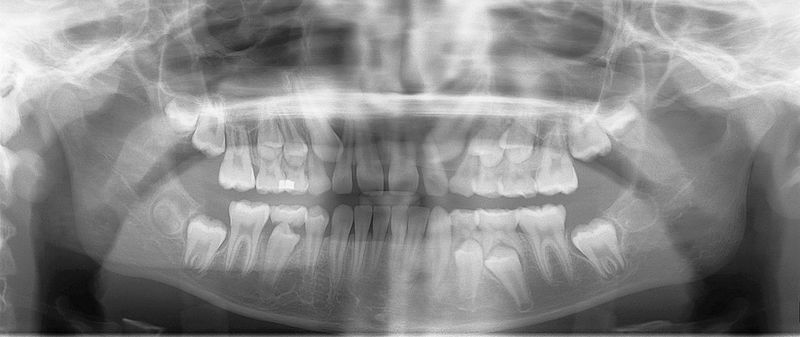Dental x-rays are pictures of the teeth, bones, and tissues around them. They help identify problems with the teeth, mouth and jaws. X-ray pictures can show cavities, hidden dental structures (such as wisdom teeth), and bone loss that cannot be seen during a purely visual examination. Dental X-rays may also be done as follow-up after dental treatments.
The X-rays use small amounts of radiation. Digital x-ray units produce less radiation than traditional dental x-ray units.
The following types of dental X-rays are commonly used.
Bitewing X-rays
Bitewing X-rays show the upper and lower back teeth and how the teeth touch each other in a single view. These X-rays are used to check for decay between the teeth and to show how well the upper and lower teeth line up. They also show bone loss when severe gum disease or a dental infection is present.
Periapical X-rays
Periapical X-rays show the entire tooth, from the exposed crown to the end of the root and the bones that support the tooth. These X-rays are used to find dental problems below the gum line or in the jaw, such as impacted teeth, abscesses, cysts, tumors, and bone changes linked to some diseases.
Occlusal X-rays
Occlusal X-rays show the roof or floor of the mouth and are used to find extra teeth, teeth that have not yet broken through the gums, jaw fractures, a cleft in the roof of the mouth (cleft palate), cysts, abscesses, or growths. Occlusal X-rays may also be used to find a foreign object.
Panoramic X-rays
Panoramic X-rays show a broad view of the jaws, teeth, sinuses, nasal area, and temporomandibular (jaw) joints. These X-rays do not find cavities. These X-rays do show problems such as impacted teeth, bone abnormalities, cysts, solid growths (tumors), infections, and fractures.
Digital X-rays
Digital X-rays can be sent to a computer to be recorded and saved.They have the potential for requiring less radiation. The development of CBCT technology has improved our ability to view and diagnose dental conditions and to manipulate the images in real time.
A full-mouth series of periapical X-rays (about 14 to 21 X-ray films) is most often done during a person’s first visit to the dentist. Bitewing X-rays are used during checkups to look for tooth decay. Panoramic X-rays may be used occasionally. Dental X-rays are scheduled when you need them based on your age, risk for disease, and signs of disease.










